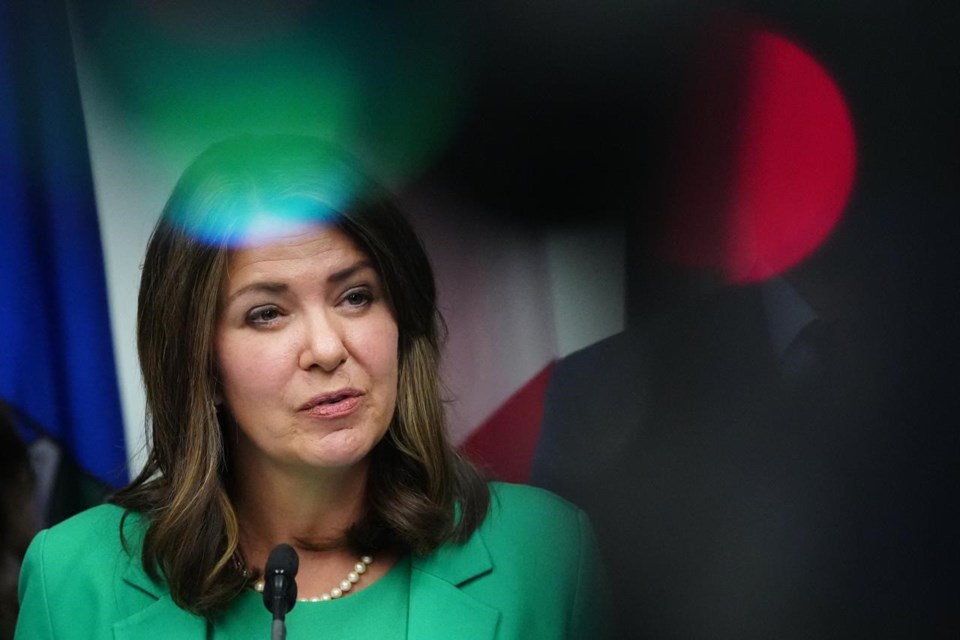EDMONTON — Health care and education came out ahead Thursday in a generally restrained Alberta provincial budget forecasting a paper-thin surplus that could easily go up in smoke.
"It is a solid budget based on measured choices," Finance Minister Nate Horner told reporters.
Horner followed instructions from Premier Danielle Smith in delivering the 2024-25 budget, keeping spending increases below 6.2 per cent, a figure derived from the province's rate of inflation and population growth.
That has led to a total spending forecast of $73.2 billion, a 3.9 per cent increase from last year. Horner expects a surplus of $367 million.
However, the $2 billion the government has reserved for contingencies such as drought and wildfire is about a third less than what was spent last year on those disasters. The province is expecting another dry and hot summer.
"We know we're starting out in a rough spot," Horner said.
"You could make (a contingency fund) as high as you want, but you do need it to be realistic."
As well, resource revenues are expected to make up nearly a quarter of provincial revenues through 2026. Each dollar drop in the benchmark price of oil costs Alberta more than $600 million.
The government has forecast the price of West Texas Intermediate crude to average US$74 per barrel. On Thursday, the U.S. oil benchmark was above US$78 per barrel.
The $1.1-billion increase in health-care spending will largely go to public health, doctors' pay and acute care. The costs of the government's previously announced health-care restructuring are expected to be another $70 million this year, although officials suggest those costs will be recouped through efficiencies.
The budget contains no funds for a long-promised hospital in south Edmonton. There is $20 million over three years to plan for a stand-alone children's hospital in the provincial capital but no timeline for construction to begin.
Spending on mental health and addiction is forecast to decrease slightly in 2024-25, from $180 million to $171 million. However, that is expected to rise to $236 million the following year as the government moves forward on its plan for treatment centres.
Education also received a 4.4 per cent increase. Most of that will be used to hire new teachers and educational assistants.
"Budget 2024 will allow schools to hire hundreds more teachers, educational assistants and other support staff," Horner said.
He said the budget allocates money for 98 new and modernized schools.
Funding for private schools and early childhood centres will increase at four times the rate of public K-12 spending.
Opposition New Democrat Leader Rachel Notley criticized both the health care and education spending. She said just keeping up with Alberta's population growth would require hiring 2,800 health-care staff.
"This budget is planning for less than a third of that," Notley said.
She also said about 28,000 students enter the province's education system every year. The budget allocates enough money for that many classroom spaces but only over three years.
"It's just over one-third of what's required," Notley said.
University of Calgary economist Trevor Tombe suggested spending restrictions in the budget are partly a mirage.
He said the government had already boosted spending by about $2 billion over its last budget. The 3.9 per cent increase Horner claimed is calculated on top of the boosted spending.
"That's the reason they're not cutting taxes," he said.
Horner confirmed a tax cut for lower-income Albertans the United Conservatives promised during last year's provincial election will be put off for two years.
Tombe also said the new budget requires $73 oil to be balanced — an increase of $5 over last year's figure.
"In terms of getting off the resource roller-coaster, this budget makes it worse," he said. "I felt a little bit of a bait and switch."
Alberta Municipalities said the budget is lacking.
"The $722 million in funding allocated to the Local Government Fiscal Framework ... falls far short of what is needed to address current infrastructure needs," said a press release from the group.
Business groups welcomed the spending plan.
In a release, the Calgary Chamber of Commerce praised the budget's focus on fiscal responsibility "while making important investments in diversification, decarbonization and vibrancy."
The budget contains $151 million in operating funds over the next three years to enhance its Wildfire Management Program. There's an additional $55 million for new equipment, including replacing the air tanker fleet.
The budget includes a new annual tax on electric vehicles, raises the levies on cigarettes and vaping, and allocates $15 million for a new hockey arena in Calgary.
Resource royalties are expected to shrink by about 12 per cent from last year but will still make up nearly a quarter of provincial revenues over the next three years.
The government will put $2 billion into its rainy-day Heritage Savings Trust Fund out of cash left over from this year but anticipates no payments for the next three years.
The budget anticipates operating surpluses of $2.6 billion by 2026.
Alberta's total taxpayer-supported debt is $78.4 billion. The province will borrow about $20 billion this year to fund capital projects and service debt. Borrowing is expected to fall to $4 billion by next year.
This report by The Canadian Press was first published Feb. 29, 2024.
Bob Weber, The Canadian Press




